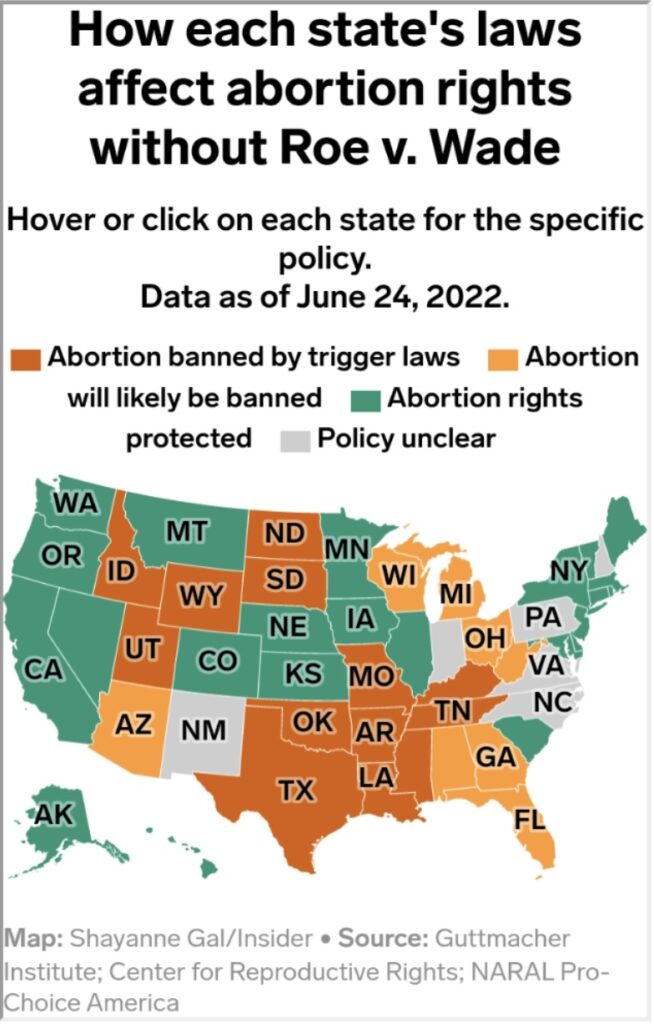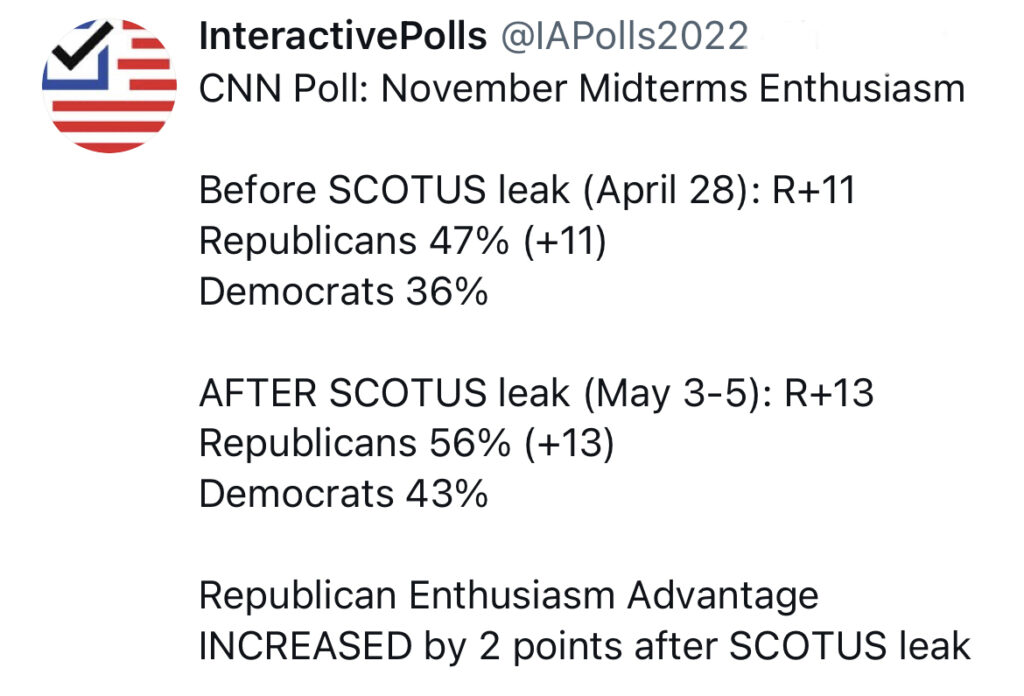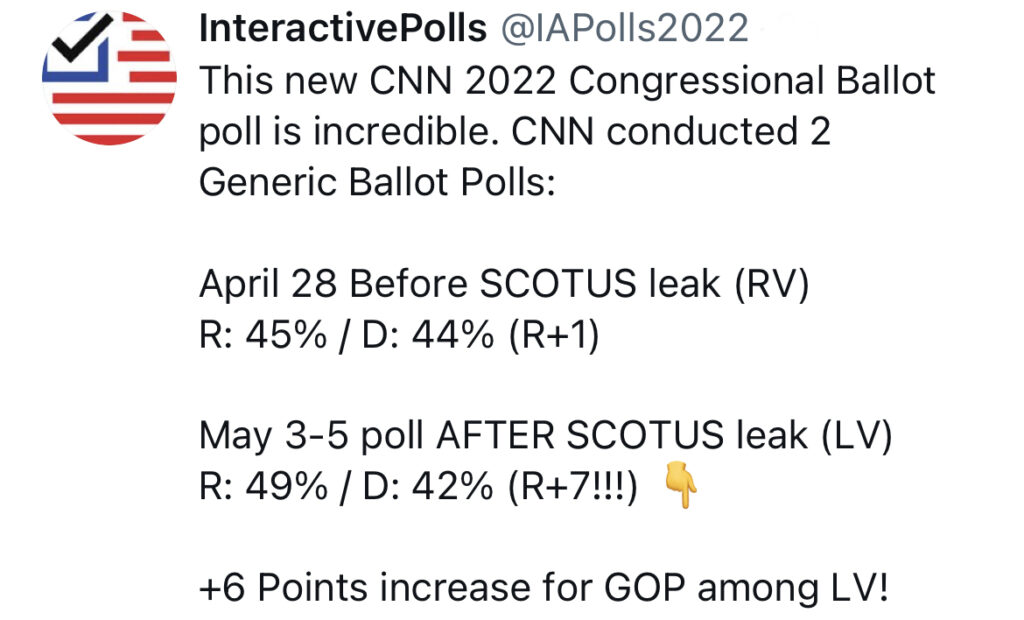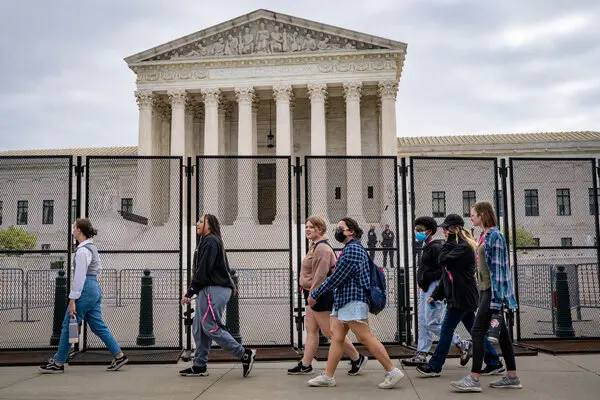Good Riddance to Roe v Wade!
The recent release of the Dobbs decision by the Supreme Court (SCOTUS) will change abortion laws in the United States. The prior leak of what was later confirmed to be a draft the Dobbs ruling was unprecedented. It was an attack on the very institution of the Court, as these rulings are intended to be released to the public all at once after the justices have properly deliberated and edited a draft prepared to the liking of all of the justices in the majority. The riots and political efforts to intimidate the justices into changing their decision is not only an attack upon the Supreme Court but also upon our Constitutional system of government as a whole. Thankfully, these efforts have failed.
Legal Impact
The court heard arguments earlier this year about a law hailing from Mississippi that would prohibit abortion procedures in that state after the 15th week of pregnancy except in cases of medical emergency or fetal abnormality. A doctor performing such a procedure after the 15th week without a proper excuse, will face only the loss of their medical license. Individuals falsely accusing a doctor under the law are subject to a $500 fine, to prevent frivolous allegations. It is essentially a first trimester ban (even if it spills into the second trimester). Of 42 European countries, 39 have more restrictive abortion laws than the Mississippi law even though few Americans claim that Europe is a place with weaker protections for women’s rights.
There are six justices who have found in favor of the Mississippi law, including Chief Justice John Roberts. There are five justices, however, who seek to use this case to overturn the precedents set in the 1973 Roe v Wade and the 1992 Planned Parenthood v Casey decisions. The names on the list are not all that surprising: Clarence Thomas, Samuel Alito, Neil Gorsuch, Bret Kavanaugh, and Amy Coney Barrett. Retiring Justice Stephen Breyer and justices Sonia Sotomayor and Elena Kagan dissent from the decision, being against both the overturning of the prior precedents and against the Mississippi law. It is a curiosity that three of the justices in the majority opinion were nominated by Donald Trump with the other two hailing from the Bushes. Several presidents have ultimately fulfilled their campaign promises to nominate justices who would overturn the Roe precedent.
If the court went only so far as Chief Justice Roberts was willing to go, the lower courts will have to allow the enactment of laws like the Mississippi law and those less restrictive than that law. More restrictive laws would continue to face barriers in federal courts until the Supreme Court took on another case on the subject and offered further detail. Because the five justices were willing to say in their opinion that Roe v Wade should be overturned all together, states are now free to set abortion laws as they please. Some have already banned abortion, others are likely to do so soon. Some states may simply set a time frame for the procedure (like the Mississippi law’s 15 weeks) and increase the health regulations surrounding the procedure. The map below shows approximately where the states are now as of the release of the Dobbs decision.

In most European countries the abortion procedure is prohibited after the first trimester. These prohibitions generally vary in range from the 12th week of pregnancy to the 14th. The United Kingdom has relatively lax regulations allowing the procedure up to the 24th week of pregnancy. In Europe, the procedure is always performed at hospital. There is often a process a patient undergoes before the procedure which starts with some form of exam by a doctor to confirm that the woman is healthy enough to undergo it. This process ensures there is informed consent, that the patient understands the medical procedure and its possible health consequences. In the United States, the procedure is conducted in clinics by doctors of questionable qualification and in many states no exam is necessary to determine the health of the woman prior to the procedure. In California, the procedure does not even have to be performed by a doctor.
Political Impact
Since the news of the SCOTUS ruling was prematurely released, it has seen protests and riots on the part of pro-choice groups. In Los Angeles, police cars were vandalized (destroyed) and several officers injured. The Supreme Court building in Washington DC has had to be secured behind a security barrier. Several pregnancy centers were vandalized or burned and threats have been issued to many of them. Democrats in Congress have been calling for the impeachment of justices and they did what they can to apply pressure to convince them to change their votes. The separation of powers in our constitutional system means it is not for Congress to assault the court this way. At several press conferences, the White House has both refused to condemn the leak (along with the entire Democrat Party) and refused to condemn the doxing of and threats against Supreme Court justices. Indeed, rioters have often appeared outside the homes of Supreme Court Justices. An attempt on Justice Kavanaugh’s life was thwarted.

Going into the Midterm Elections this November, Democrats are hoping this issue can galvanize their base and reduce the expected electoral damage. Polls suggest a red tsunami is coming. Many establishment Republicans are likewise nervous about how the issue will impact the coming elections. All for naught apparently, as a CNN poll released on May 6th shows a huge increase in Republican voter enthusiasm after the SCOTUS leak. Republicans were already on track to win a landslide in the House and probably also the Senate, despite fewer contested elections. With this news, the likelihood of a red tsunami has drastically increased.

The generic candidate poll is often used to test congressional races nationally. Likely voters are asked for which party they intend to vote rather than for specific candidates. Prior to the SCOTUS leak, the GOP held a 1% lead 45%-44% over the Democrats (a substantial lead given that the Democrats usually have the advantage even in years wherein the Republicans win). Since the leak, the margin among likely voters widened to 7% with the GOP gaining substantially 49%-42%. It seems this leak has galvanized the vote and very much in the Republican Party’s favor. It is noteworthy that these are CNN numbers, which is not a rightwing polling agency.
Polls have already shown that a majority of Americans support the heartbeat ban (6 weeks), while larger majorities support some restriction of abortion early in pregnancy. About 8 out of 10 oppose late term abortion. Nevertheless, polls over the past several years have shown that the majority also want the procedure to remain legal for at least some significant period of a pregnancy. Following the leak, the Democrats proposed a bill in the Senate that, if passed, would have eliminated all restrictions on abortion and would have actually been less restrictive than the SCOTUS has been in the past. The bill would have eliminated laws against late-term abortion, which 80% of Americans oppose. The bill failed thanks to the filibuster, but it demonstrates how extreme and completely out of touch with voters the Democrats are on the abortion issue. The conservative position of banning abortion outright is much closer to the voters and leads the trend of younger voters who are more pro-life on the whole. Thus, this issue will be a boon to the GOP over the long-term. Indicating that the tired trope that younger people are more radically left than older is something of a fiction. If the Democrats continue to run on the abortion issue from their extreme position, it will prove a sure failure for them.
Social Impact
It has not escaped notice in recent years that the number of abortion procedures being performed has been drastically decreasing. Clinics have been going out of business across the country for want of business. Millennials have chosen to be less promiscuous than earlier generations and Gen Z is even less so. Younger people are having less sex, naturally leading to fewer abortions. Contraception has also improved in recent years, with the morning after pill and Plan B joining a number of contraceptive options available to women.
Texas has recently passed laws restricting abortion procedures. The result has been a decrease in the number of procedures in Texas. The number of procedures has also increased in New Mexico, Oklahoma, and Louisiana where fewer restrictions have existed. It follows that some Texans are crossing state lines to have the procedure. Still, the total number of procedures is slightly lower than in years prior to Texas implementing its law. It is safe to say, that the restriction of abortion procedures will lead to fewer still, even as younger generations have less demand for the procedure. Nevertheless, California, Illinois, and New York will continue to be extremely permissive when it comes to abortion procedures. Anyone who truly wants the procedure will be able to access it somewhere in the US. There are nonprofits that offer free transportation for those who cannot afford to travel for the procedure.
Many companies have been boasting about how they will increase healthcare benefits for their employees to permit travel for abortion procedures. It is a curiosity since these companies often do not provide paid maternity leave and resist political efforts to make such leave mandatory. Surely, there is nothing misogynist or oppressive about companies compelling their employees toward certain reproductive choices.
Good Riddance to Roe v Wade
The Roe decision was bad law. In it, the Supreme Court forced the states to allow medical procedures that many wished to prohibit. In the name of protecting access to this procedure, the SCOTUS severely limited the power of the states to regulate healthcare and medical safety within their jurisdictions. The court imposed upon the country the most extreme policy on the subject very much against the will of the voters. The court also imposed some of the most permissive abortion practices in the world. Trends are now headed in a very different direction and most voters want the procedure to be restricted.
Those on the left are always saying America should be more like Europe. Yet, Europe restricts the procedure to the first trimester, and prohibits it thereafter. The procedure is also conducted in a hospital. Women should have the right to informed consent, which has been lacking in the US, and to safe medical procedures. This is the European model and it is one that would meet with the support of vast majorities of voters in most states. Yet, this reasonable position has met opposition from the left for years as they advocate for the extreme.
In the future, states will ban abortion or set what limits they wish to set. The laws will vary by state. It will no longer be the court’s place to dictate policy to the states against their will.







